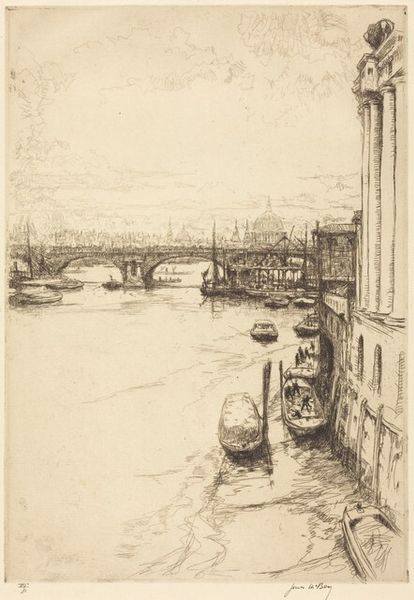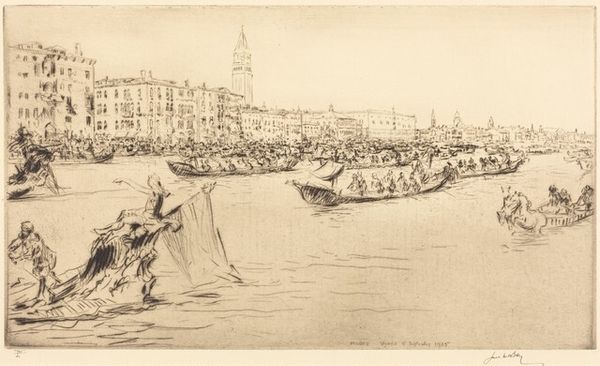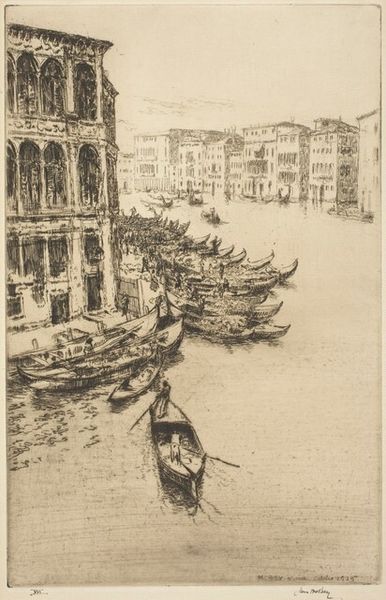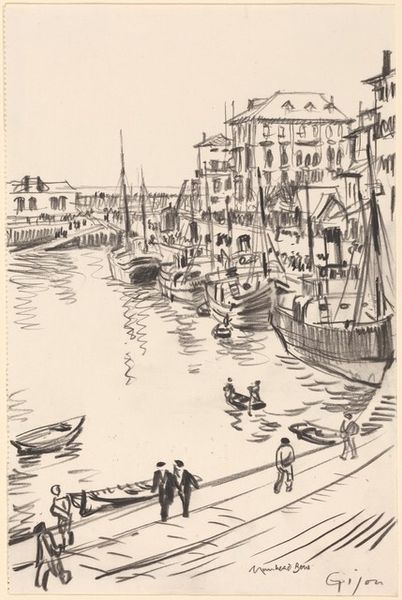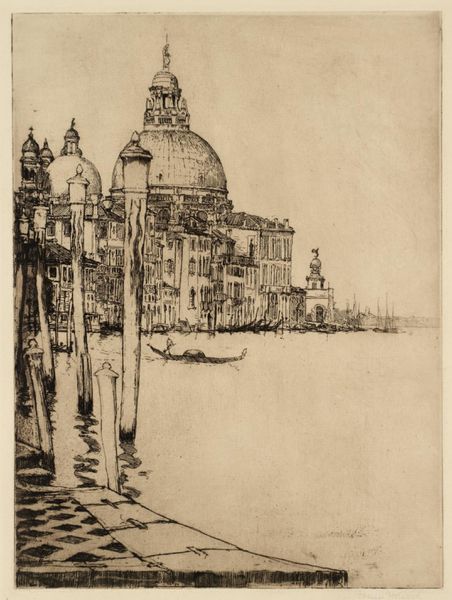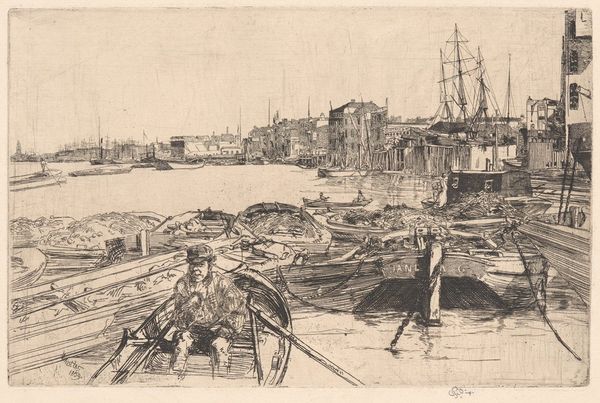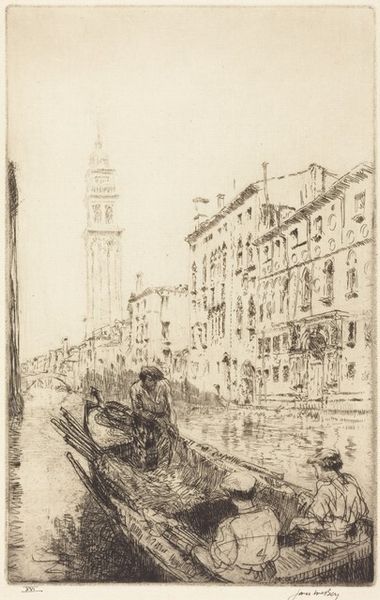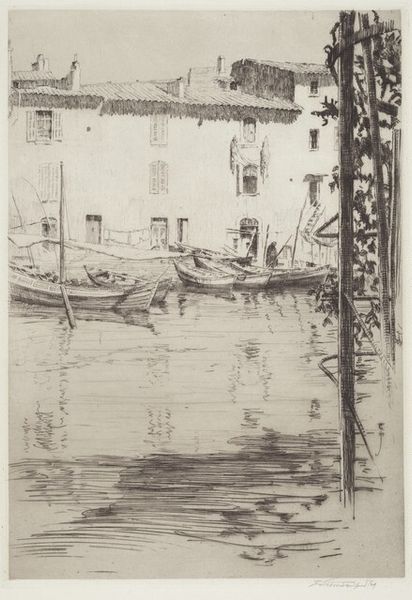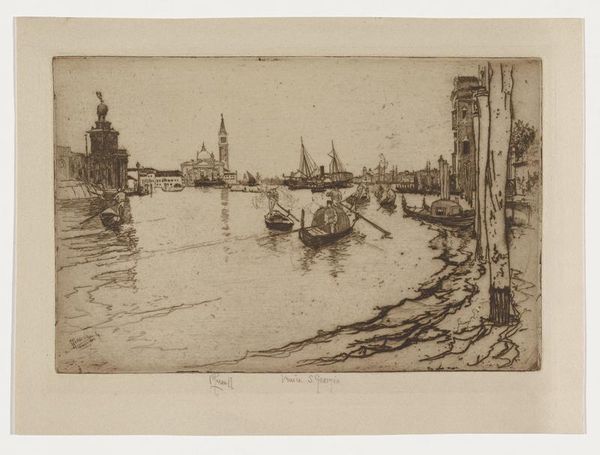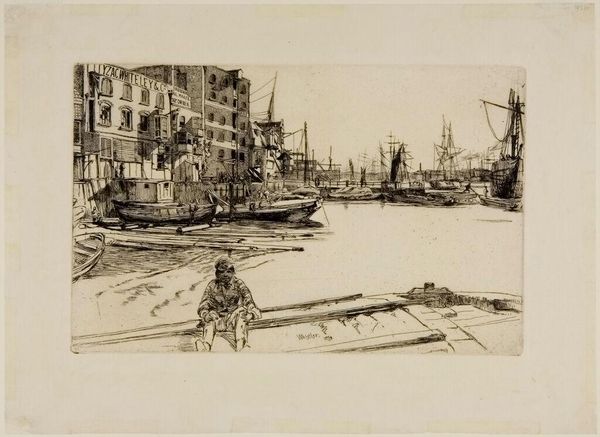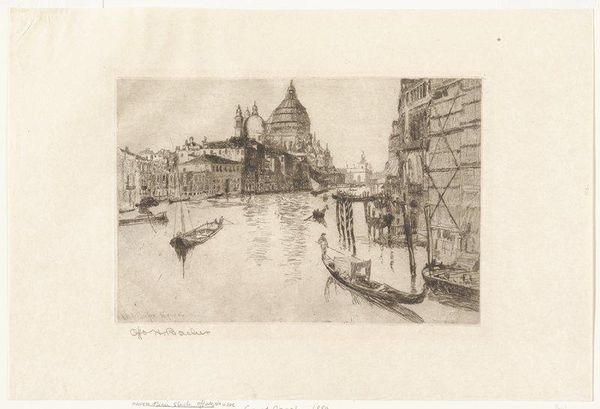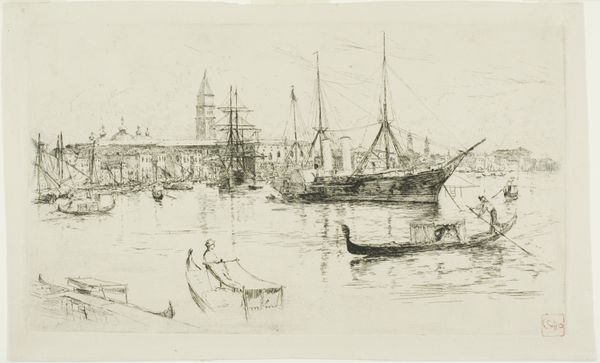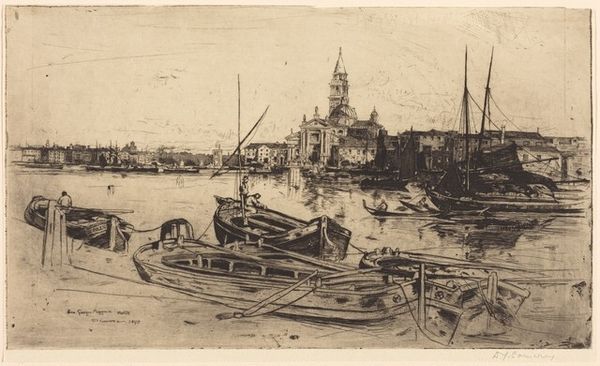
drawing, print, etching, ink
#
drawing
#
medieval
# print
#
etching
#
landscape
#
perspective
#
ink
#
cityscape
#
history-painting
Copyright: National Gallery of Art: CC0 1.0
Editor: This is David Young Cameron’s "St. Paul’s from the Thames," an etching from 1899. I’m struck by the contrast between the intricate detail of the cathedral and the rougher, more immediate lines used to depict the boats in the foreground. What should we be paying attention to in this work? Curator: Let's consider the context of printmaking at the time. Etching was becoming increasingly popular, and that accessibility influenced what artists chose to depict and how. Notice how Cameron uses the etching process not just to represent the scene, but to draw attention to the means of its production. Editor: In what way? Curator: Look closely. The lines themselves, the varying depths and densities achieved through the acid biting into the metal plate – they're not just descriptive; they're part of the artwork’s inherent value. Also, who would have bought this print, and why? Was it intended for mass consumption, or for a more discerning art market that prized craftsmanship and artistry? Editor: So, the appeal might have been partly in owning something that showcased skill in a specific, almost industrial, process? How does the subject of the piece, the cathedral and the Thames, play into this? Curator: The Thames was the lifeblood of London’s industry and commerce. Showing St. Paul’s rising above that bustling, working river isn't just picturesque; it speaks to the relationship between power, labor, and the urban landscape itself. The choice of etching as a medium reinforces this connection. Editor: It’s fascinating how focusing on the materiality changes my perception of the image. I originally saw a pretty scene, but now it’s about London's economy! Curator: Exactly. By looking at how it was made and who it was for, we get a richer understanding of the artist's intent, and the values of the time. Editor: That makes me consider the physical labor that was involved in printing these in multiples. I hadn’t thought of that aspect. Thanks for your insight.
Comments
No comments
Be the first to comment and join the conversation on the ultimate creative platform.
